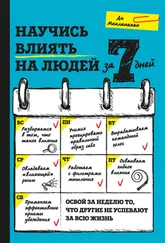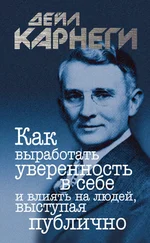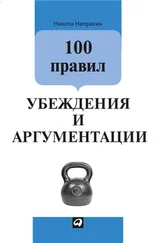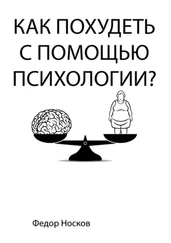Petty, R. E. & Cacioppo, J. T. (1990). Involvement and persuasion: Tradition versus integration. Psychological Bulletin, 107(3), 367–374.
Petty, R. E., Cacioppo, J. T. & Heesacker, M. (1981). Effects of rhetorical questions on persuasion: A cognitive response analysis. Journal of Personality and Social Psychology, 40 (3), 432–440.
Plassmann, H., O'Doherty, J., Shiv, B. & Rangel, A. (2008). Marketing actions can modulate neural representations of experienced pleasantness. Proceedings of the National Academy of Sciences, 105 (3), 1050 –1054.
Pocheptsova, A., Labroo, A. A. & Dhar, R. (2010). Making products feel special: When metacognitive difficulty enhances evaluation. Journal of Marketing Research, 47 (6), 1059–1069.
Quattrone, G. A., Lawrence, C. P., Finkel, S. E. & Andrus, D. C. (1984). Explorations in anchoring: The effects of prior range, anchor extremity, and suggestive hints. Unpublished Manuscript, Stanford University.
Reber, R., Schwarz, N. & Winkielman, P. (2004). Processing fluency and aesthetic pleasure: Is beauty in the perceiver's processing experience?. Personality and Social Psychology Review, 8 (4), 364–382.
Rhodes, G., Simmons, L. W. & Peters, M. (2005). Attractiveness and sexual behavior: Does attractiveness enhance mating success? Evolution and Human Behavior, 26 (2), 186–201.
Rogers, R. W. & Mewborn, C. R. (1976). Fear appeals and attitude change: effects of a threat's noxiousness, probability of occurrence, and the efficacy of coping responses. Journal of Personality and Social Psychology, 34 (1), 54–61.
Rist, R. C. (1970). Student social class and teacher expectations: The self-fulfilling prophecy in ghetto education. Harvard Educational Review, 40 (3), 411–451.
Rucker, D. D., Petty, R. E. & Briñol, P. (2008). What's in a frame anyway?: A meta-cognitive analysis of the impact of one versus two sided message framing on attitude certainty. Journal of Consumer Psychology, 18, 137–149.
Ryan, R. M. (1982). Control and information in the intrapersonal sphere: An extension of cognitive evaluation theory. Journal of Personality and Social Psychology, 43 (3), 450–461.
Sanbonmatsu, D. M. & Kardes, F. R. (1988). The effects of physiological arousal on information processing and persuasion. Journal of Consumer Research, 379–385.
Santos, M. D., Leve, C. & Pratkanis, A. R. (1994). Hey buddy, can you spare seventeen cents? Mindful persuasion and the pique technique. Journal of Applied Social Psychology, 24 (9), 755–764.
Schachter, S. & Singer, J. E. (1962). Cognitive, social, and physiological determinants of emotional state. Psychological Review, 69 (5), 379–399.
Schubert, T. W. & Koole, S. L. (2009). The embodied self: Making a fist enhances men's power-related self-conceptions. Journal of Experimental Social Psychology, 45 (4), 828–834.
Schwarz, N., Bless, H., Strack, F., Klumpp, G., Rittenauer-Schatka, H., & Simons, A. (1991). Ease of retrieval as information: Another look at the availability heuristic. Journal of Personality and Social Psychology, 61 (2), 195–202.
Schwarz, N. & Clore, G. L. (1983). Mood, misattribution, and judgments of well-being: Informative and directive functions of affective states. Journal of Personality and Social Psychology, 45 (3), 513.
Seiter, J. S. & Dutson, E. (2007). The effect of compliments on tipping behavior in hairstyling salons. Journal of Applied Social Psychology, 37 (9), 1999–2007.
Sherif, M. (1936). The Psychology of Social Norms. New York: Harper.
Shih, M., Pittinsky, T. L. & Ambady, N. (1999). Stereotype susceptibility: Identity salience and shifts in quantitative performance. Psychological Science, 10 (1), 80–83.
Shiv, B., Carmon, Z. & Ariely, D. (2005). Placebo effects of marketing actions: Consumers may get what they pay for. Journal of Marketing Research, 383–393.
Shultz, T. R. & Lepper, M. R. (1996). Cognitive dissonance reduction as constraint satisfaction. Psychological Review, 103(2), 219.
Sigall, H. & Ostrove, N. (1975). Beautiful but dangerous: Effects of offender attractiveness and nature of the crime on juridic judgment. Journal of Personality and Social Psychology, 31 (3), 410–414.
Simons, D. J. & Levin, D. T. (1998). Failure to detect changes to people during a real-world interaction. Psychonomic Bulletin & Review, 5 (4), 644–649.
Skinner, B. F. (1948). Superstition in the pigeon. Journal of Experimental Psychology, 38 (2), 168–172.
Snyder, M., Tanke, E. D. & Berscheid, E. (1977). Social perception and interpersonal behavior: On the self-fulfilling nature of social stereotypes.
Stepper, S. & Strack, F. (1993). Proprioceptive determinants of emotional and nonemotional feelings. Journal of Personality and Social Psychology, 64, 211–211.
Strack, F., Martin, L. L. & Stepper, S. (1988). Inhibiting and facilitating conditions of the human smile: A nonobtrusive test of the facial feedback hypothesis. Journal of Personality and Social Psychology, 54 (5), 768–777.
Strack, F. & Mussweiler, T. (1997). Explaining the enigmatic anchoring effect: Mechanisms of selective accessibility. Journal of Personality and Social Psychology, 73, 437–446.
Strack, F. & Neumann, R. (2000). Furrowing the brow may undermine perceived fame: The role of facial feedback in judgments of celebrity. Personality and Social Psychology Bulletin, 26 (7), 762–768.
Strick, M., van Baaren, R. B., Holland, R. W. & van Knippenberg, A. (2011). Humor in advertisements enhances product liking by mere association. Psychology of Popular Media Culture, 1, 16–31.
Thompson, D. V. & Chandon Ince, E. (2013). When disfluency signals competence: The effect of processing difficulty on perceptions of service agents. Journal of Marketing Research, 50 (2), 228–240.
Townsend, C. & Shu, S. B. (2010). When and how aesthetics influences financial decisions. Journal of Consumer Psychology, 20 (4), 452–458.
Tversky, A. & Kahneman, D. (1973). Availability: A heuristic for judging frequency and probability. Cognitive Psychology, 5 (2), 207–232.
Tversky, A. & Kahneman, D. (1974). Judgment under uncertainty: Heuristics and biases. Science, 185 (4157), 1124–1131.
Tversky, A. & Kahneman, D. (1981). The framing of decisions and the psychology of choice. Science, 211(4481), 453–458.
Tversky, A. & Kahneman, D. (1991). Loss aversion in riskless choice: A reference-dependent model. The Quarterly Journal of Economics, 106 (4), 1039–1061.
Valins, S. (1967). Emotionality and information concerning internal reactions. Journal of Personality and Social Psychology, 6 (4), 458.
Van Baaren, R. B., Holland, R. W., Steenaert, B. & van Knippenberg, A. (2003). Mimicry for money: Behavioral consequences of imitation. Journal of Experimental Social Psychology, 39(4), 393–398.
Van Bavel, J. J., Packer, D. J. & Cunningham, W. A. (2008). The neural substrates of in-group bias: A functional magnetic resonance imaging investigation. Psychological Science, 19 (11), 1131–1139.
Wansink, B., Kent, R. J. & Hoch, S. J. (1998). An anchoring and adjustment model of purchase quantity decisions. Journal of Marketing Research, 35 (1), 71–81.
Wells, G. L. & Petty, R. E. (1980). The effects of overt head movements on persuasion: Compatibility and incompatibility of responses. Basic and Applied Social Psychology, 1 (3), 219–230.
White, G. L., Fishbein, S. & Rutsein, J. (1981). Passionate love and the misattribution of arousal. Journal of Personality and Social Psychology, 41(1), 56.
Whittlesea, B. W. (1993). Illusions of familiarity. Journal of Experimental Psychology: Learning, Memory, and Cognition, 19 (6), 1235.
Williams, K. B., Radefeld, P. S., Binning, J. F. & Sudak, J. (1993). When job candidates are "hard-" versus "easy-to-get": Effects of candidate availability on employment decisions. Journal of Applied Social Psychology, 23 (3), 169–198.
Читать дальше
Конец ознакомительного отрывка
Купить книгу
![Ник Коленда Система убеждения [Как влиять на людей с помощью психологии] обложка книги](/books/27717/nik-kolenda-sistema-ubezhdeniya-kak-vliyat-na-lyudej-cover.webp)







![Ангелина Шам - Ангел влияния [Технологии коммуникативного гипноза для убеждения и мотивации людей] [litres]](/books/408070/angelina-sham-angel-vliyaniya-tehnologii-kommunikati-thumb.webp)



